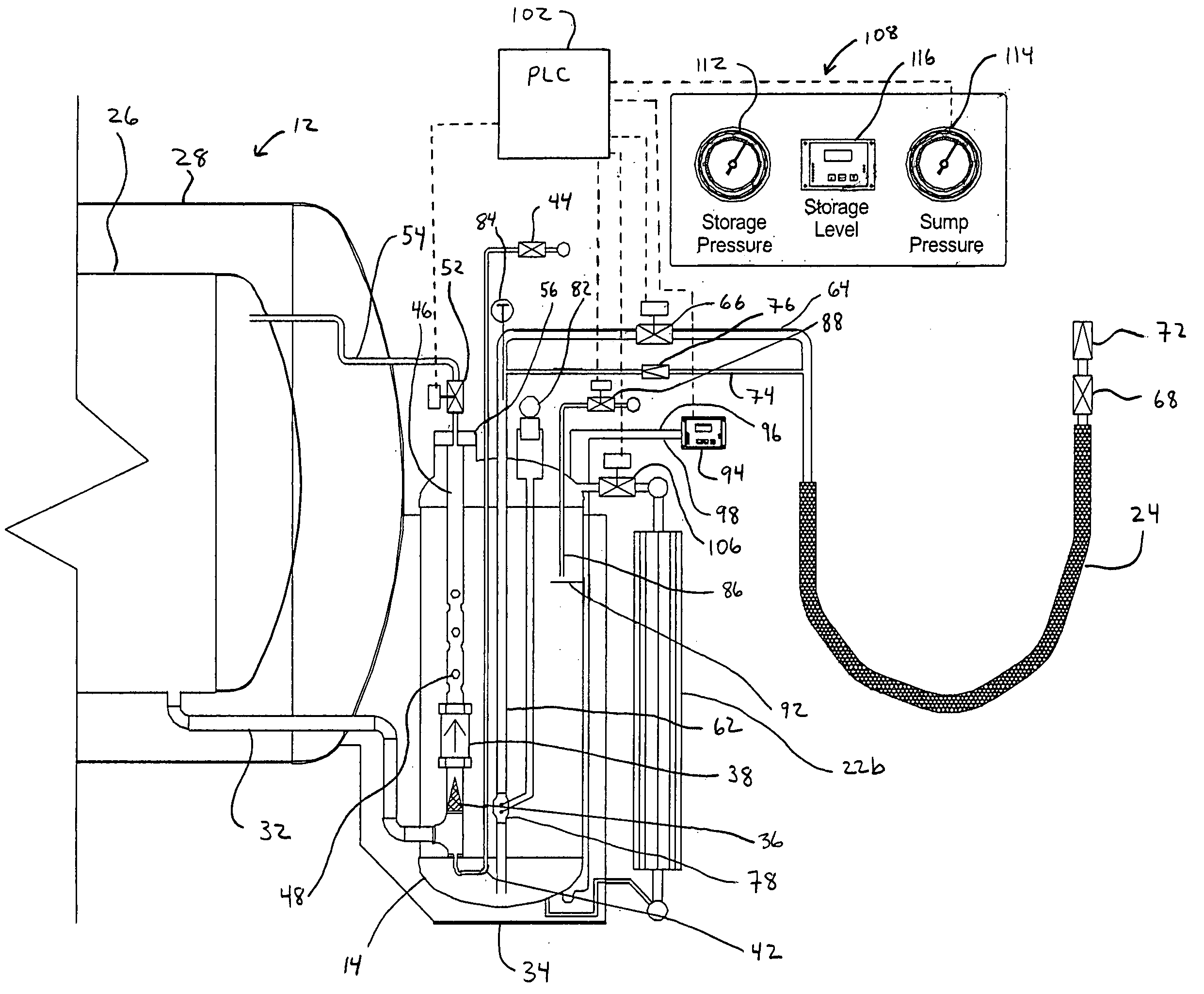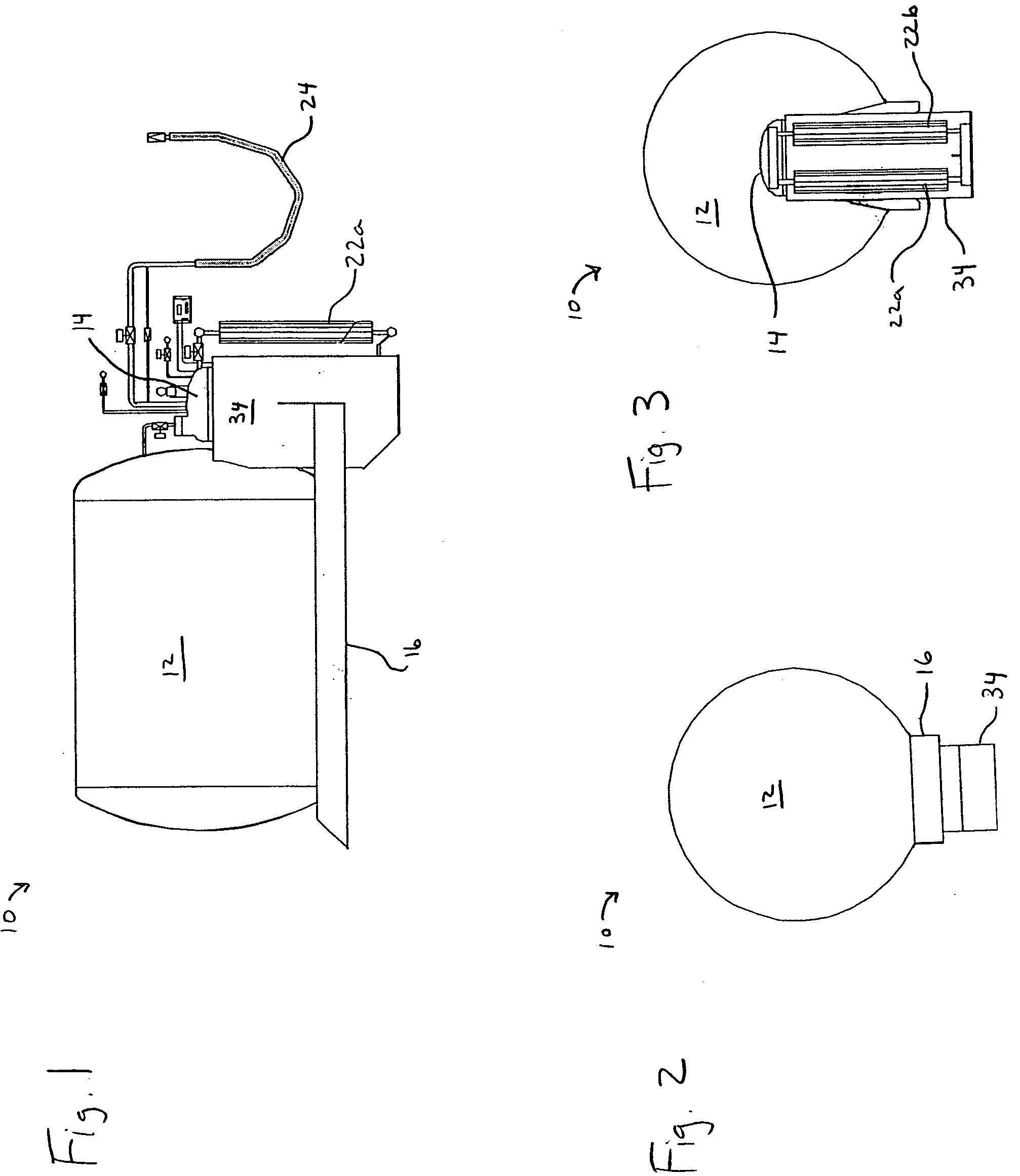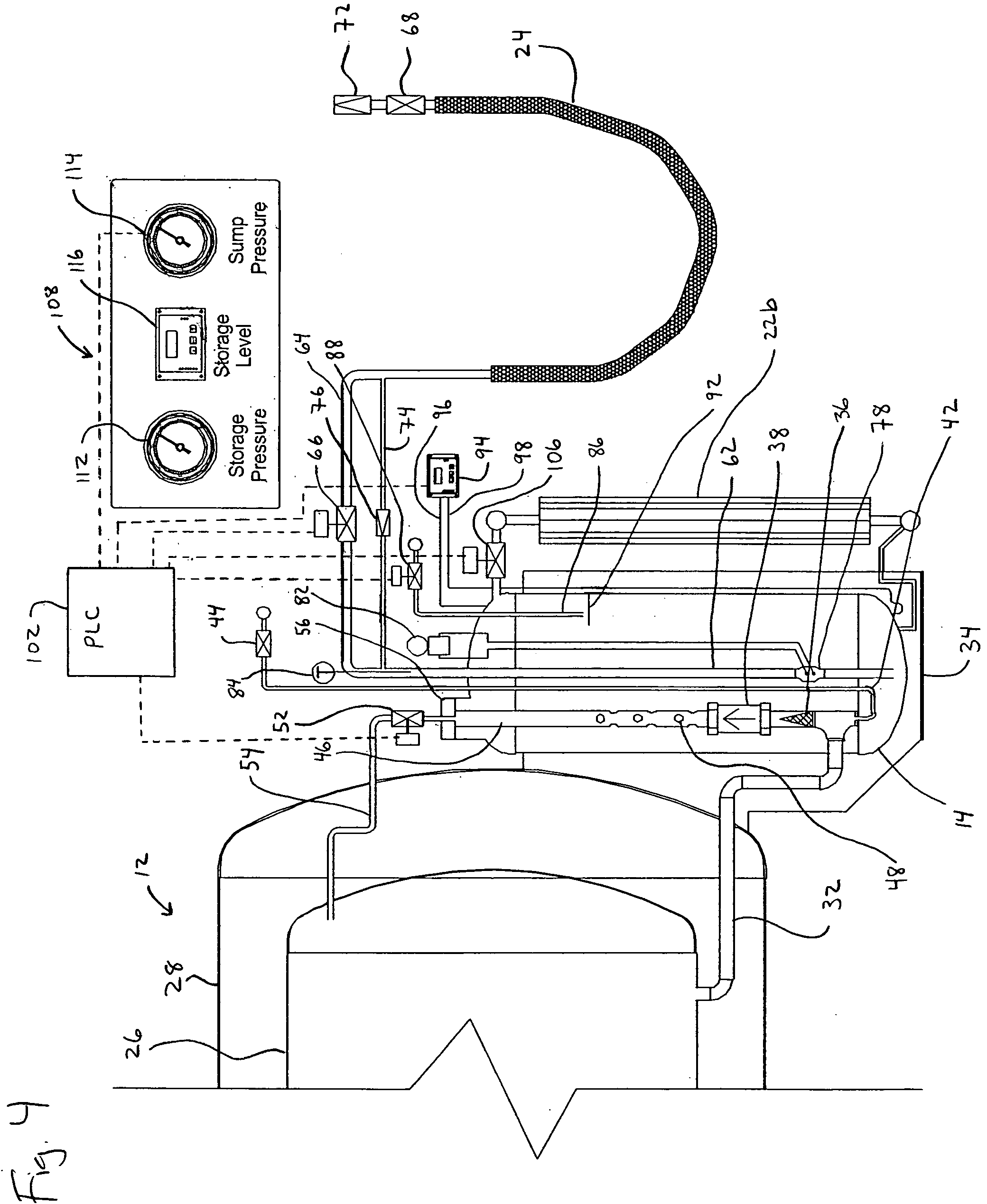Cryogenic fluid dispensing system
a cryogenic fluid and dispensing system technology, applied in the direction of container discharging methods, container filling under pressure, vessel construction details, etc., can solve the problems of increasing the heat leakage to the stored cryogen, and reducing the efficiency of discharging
- Summary
- Abstract
- Description
- Claims
- Application Information
AI Technical Summary
Problems solved by technology
Method used
Image
Examples
first embodiment
[0032] the system of the present invention is indicated in general at 10 in FIGS. 1-3. The system features a jacketed bulk tank 12 and pulse tank or sump 14. Low pressure bulk tank 12 preferably has a volume of approximately 1000 gallons while sump 14 preferably has a volume of approximately 300 liters. Such a capacity will permit the system to fill both one and multiple cylinders at a use point without refilling the sump. A bulk tank size of 2000 gallons with a sump volume of 500 liters are preferred if larger delivery amounts are contemplated.
[0033] While the bulk tank 12 is low pressure, sump 14 preferably has a maximum allowable working pressure of approximately 500 psi. The delivery pressure of the system will typically be approximately 50 psi above the pressure of the receiving vessel. As a result, the system can dispense liquid to a 400 psi container such as those used for laser welding.
[0034] The bulk tank 12 and sump 14 are mounted on a frame 16. Frame 16 preferably is mou...
second embodiment
[0059] the system features a vent circuit or stack, indicated in general at 233 in FIG. 7, that communicates with the head space of bulk tank 212. The vent stack is provided with emergency pressure relief valves 234 that automatically open to vent the bulk tank when the pressure therein reaches a predetermined maximum level. In addition, the vent stack includes a muffler 235 that communicates with the head space of the bulk tank through main storage road relief valve 236 and main storage vent valve 237, both of which are preferably manually operated valves. The muffler preferably is constructed from a steel tube filled with brass wool. The brass wool slows the gas flow through the muffler so that is quieted. The sump tank vent line 239 and valve 240 communicate with the muffler 235 as well.
[0060] As illustrated in FIG. 7, the second embodiment of the system of the present invention also differs from the first embodiment in that the sample tube 242 communicates with the bottom of the...
PUM
 Login to View More
Login to View More Abstract
Description
Claims
Application Information
 Login to View More
Login to View More - R&D
- Intellectual Property
- Life Sciences
- Materials
- Tech Scout
- Unparalleled Data Quality
- Higher Quality Content
- 60% Fewer Hallucinations
Browse by: Latest US Patents, China's latest patents, Technical Efficacy Thesaurus, Application Domain, Technology Topic, Popular Technical Reports.
© 2025 PatSnap. All rights reserved.Legal|Privacy policy|Modern Slavery Act Transparency Statement|Sitemap|About US| Contact US: help@patsnap.com



